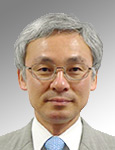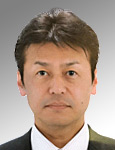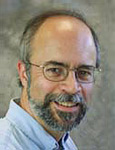Keynote
Special Speech
1-K-1
Tuesday, 8 November, 2016
Advanced constitutive modeling and application to sheet forming process simulations
- The Graduate Institute of Ferrous Technology, Pohang University of Science and Technology
Prof. Frederic Barlat
- Continuum constitutive descriptions of plasticity suitable for finite element simulations of sheet forming processes are succinctly discussed in this presentation. Although multi-scale approaches allow for a more explicit representation of the physical deformation mechanisms occurring at microscopic scales, they are usually not suitable for industrial applications because of the quick turnaround time needed for process design simulations. Therefore, advances in classical concepts such as plastic anisotropy and strain hardening are still very much in demand. Actual forming simulation examples conducted in the steel industry are presented for illustration purposes.
Program
Keynote Speech
1-K-1
Tuesday, 8 November, 2016
Advanced Material Testing Methods for enhancing high-precision metal forming simulations

- Mr. Toshihiko Kuwabara
Professor, Division of Advanced Mechanical Systems Engineering, Institute of Engineering, Tokyo University of Agriculture and Technology
- Improvement of the predictive accuracy for defect formation (such as fracture and springback) using FEA is key to realizing trial-and-error-less manufacturing. In metal forming processes, materials are subjected to various multiaxial stresses and stress reversals. Therefore, the validity of the material models used in FEA should be checked by using the material testing methods that accurately reproduce such complex stress states. This lecture reviews the advanced material testing methods for sheet and tubular metals. Special attention is given to the anisotropic plastic deformation behavior of industrial materials and to the validation of the material models for large plastic strain ranges. Additionally, the effects of the material models on the improvement of the predictive accuracy of forming simulations are discussed.
Program
2-K-1
Wednesday, 9 November, 2016
Development of THUMS Version 4 Child Models

- Dr. Yuichi Kitagawa
General Manager, Advanced CAE Div. Safety CAE Technology Development Dept., Toyota Motor Corporation
- THUMS is a human body FE model for simulating injury in vehicle collisions. Toyota Motor Corporation and Toyota Central R&D Labs., Inc. have jointly developed and updated THUMS. The newest versions are four and five. The new Version 4 child models will be described, and application example of Version 5 will be also presented.
Program
General Session
2-K-1
Wednesday, 9 November, 2016
Recent Development in LS-DYNA

- Dr. David J. Benson
Livermore Software Technology Corporation
Program

This website uses cookies to improve functionality and performance. If you continue browsing the site, you are giving implied consent to the use of cookies on this website. If you want to know more or refuse consent, read our Cookie Policy.
Accept


